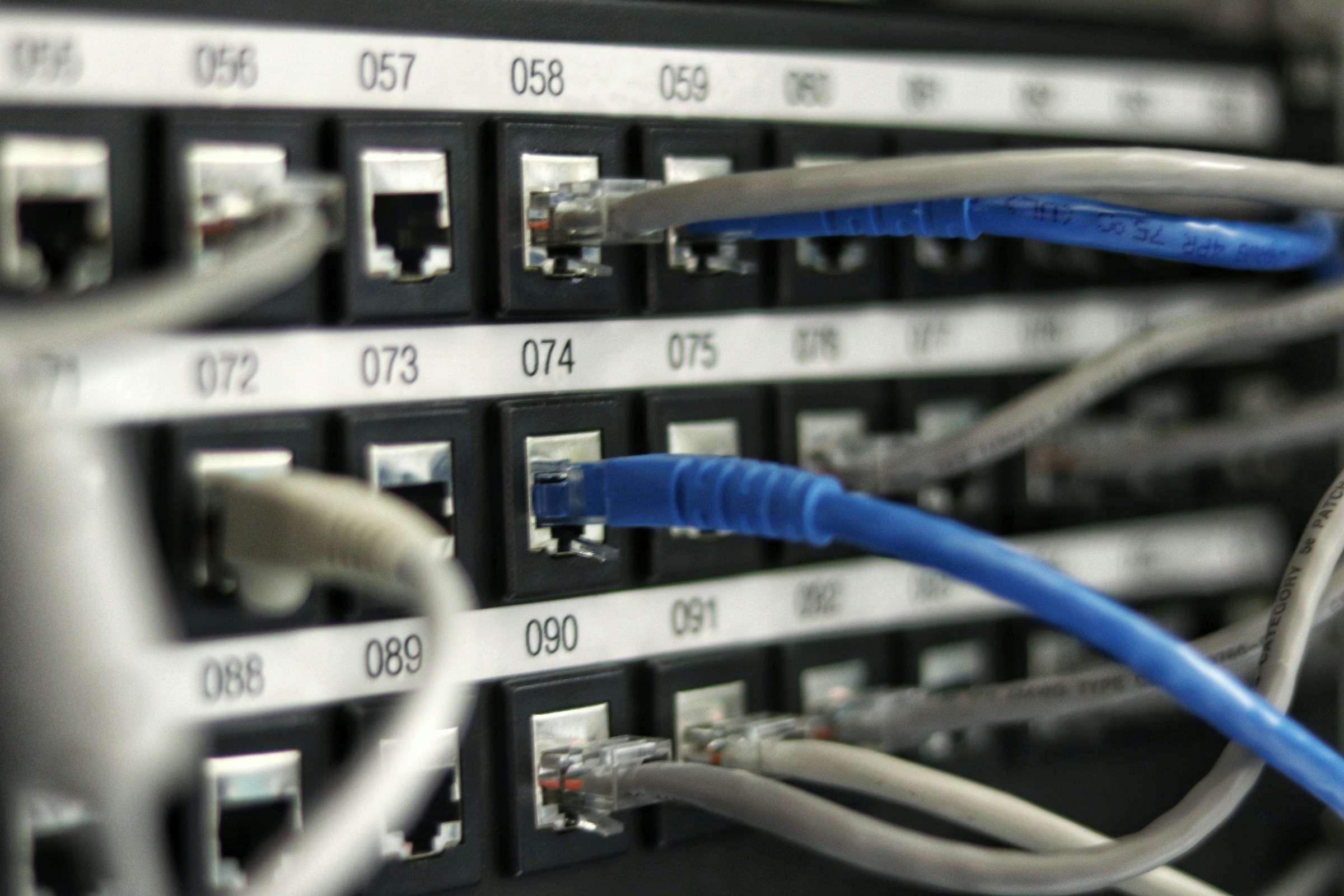CGNAT vs NAT: The Backbone of Modern Telecom Networks and NFware’s Next-Gen Solutions
The growing demand for data, devices, and connectivity has pushed network infrastructures to their limits. Service providers are tasked with delivering high-speed, secure, and reliable internet access to millions of users while optimizing their existing resources, and one of the most pressing technical challenges in this space revolves around managing IPv4 address exhaustion and enabling smooth IPv6 transition, a topic that leads directly to understanding CGNAT vs NAT and why this distinction is critical for today’s telecom operators.
While NAT (Network Address Translation) has served the networking world well for decades, it was never designed to operate at the scale required by large Internet Service Providers (ISPs), mobile operators, or enterprise carriers. CGNAT (Carrier-Grade NAT), on the other hand, offers a robust, scalable approach that allows service providers to extend their IPv4 resources efficiently, ensuring uninterrupted service while preparing for the eventual migration to IPv6.
In this article, we will see what makes CGNAT a cornerstone of modern network architecture, how it compares to NAT, and why NFware’s innovative solutions have become essential for operators striving to keep pace with today’s digital infrastructure demands.
Understanding the Basics: What Are NAT and CGNAT?
Network Address Translation (NAT) was developed to solve a fundamental problem – the shortage of IPv4 addresses. In simple terms, NAT allows multiple devices on a private network to share a single public IP address when connecting to the internet. This translation occurs at the router or gateway level, where the private IPs are masked behind one public IP, preserving address space and adding a layer of security by hiding internal network details.
For small-scale networks such as homes or small businesses, traditional NAT works perfectly. It’s simple, efficient, and doesn’t require significant resources. However, as the internet user base expanded and the number of connected devices skyrocketed, from smartphones to IoT sensors… the limitations of NAT became clear.
Unlike traditional NAT, CGNAT operates on a carrier or ISP level, enabling thousands or even millions of end-users to share a pool of public IPv4 addresses. It’s designed to handle immense data volumes, optimize performance, and maintain visibility and security across complex environments. and it essentially extends the life of IPv4 infrastructure, ensuring continuity until full IPv6 adoption becomes practical across all networks and devices.
The Core Difference: CGNAT vs NAT
The key difference between CGNAT and NAT lies in scalability, performance, and control.
| Feature | NAT | CGNAT |
|---|---|---|
| Scope | Small-scale (home or enterprise networks) | Large-scale (ISPs and telecom networks) |
| Public IP Sharing | Dozens to hundreds of devices | Thousands or millions of users |
| Performance Requirements | Moderate | High throughput and low latency |
| Logging & Visibility | Basic | Advanced, for compliance and traceability |
| Scalability | Limited | Virtually unlimited with proper hardware/software |
| IPv6 Transition Support | Basic | Built-in tools for dual-stack and IPv6 migration |
CGNAT is essentially NAT optimized for carrier-grade environments, as it adds layers of reliability, connection tracking, session management, and scalability that standard NAT can’t provide.
For telecom operators and ISPs, the ability to manage millions of concurrent connections efficiently, without degrading performance, is mission-critical. That’s where NFware’s software-based CGNAT solutions provide a competitive advantage.
Why CGNAT Is Essential for Today’s Telecom Networks
The depletion of IPv4 addresses is not a new issue, but it remains one of the most persistent challenges in global networking. Despite IPv6 offering a nearly infinite address space, the transition has been slow due to compatibility, infrastructure costs, and the vast number of legacy systems still dependent on IPv4.
CGNAT bridges this gap effectively by allowing service providers to continue operating with their existing IPv4 allocations while deploying IPv6 incrementally.
Beyond simple address conservation, CGNAT offers numerous strategic advantages:
1. Scalability and Efficiency
Telecom networks today must handle exponential traffic growth driven by streaming services, cloud computing, and mobile data. CGNAT ensures operators can manage large-scale IP translations with minimal performance loss, enabling them to scale dynamically without hardware bottlenecks.
2. Cost Optimization
By extending the life of existing IPv4 infrastructure, CGNAT significantly reduces the need to purchase additional IP blocks or accelerate IPv6 migration. For large operators, this translates into substantial long-term cost savings.
3. Enhanced Security and Traceability
CGNAT introduces advanced logging mechanisms to identify and trace user sessions even in shared environments. This capability is essential for compliance with data retention regulations and helps in detecting malicious traffic patterns or cyberattacks.
4. Seamless IPv6 Migration
A well-implemented CGNAT solution, such as NFware’s, acts as a bridge for dual-stack environments, allowing service providers to gradually roll out IPv6 without disrupting existing IPv4 services.
NFware: Redefining Network Infrastructure with Virtualized CGNAT
NFware has emerged as a trusted name in the telecom and digital infrastructure industry by delivering high-performance, software-based network solutions that help operators stay competitive in a fast-changing environment. Their Carrier-Grade NAT (CGNAT) solution is part of a broader ecosystem that includes virtual routers, Broadband Network Gateways (BNG), and traffic optimization systems.
Built for Performance and Scale
Unlike traditional hardware-based CGNAT appliances, NFware’s CGNAT runs on standard x86 servers using virtualization technology, which eliminates the dependency on expensive hardware and makes scaling effortless. Operators can deploy CGNAT functions wherever needed, in data centers, at the network edge, or in the cloud – all while maintaining exceptional throughput and minimal latency.
NFware’s architecture leverages Virtual Service Router (VSR) technology, which ensures:
- Up to millions of sessions per instance
- High availability and fault tolerance
- Dynamic scaling based on traffic demand
- Efficient CPU and memory utilization
This software-centric approach enables telecom operators to respond faster to market demands, deploy services more flexibly, and reduce total cost of ownership (TCO).
How NFware’s CGNAT Improves Network Visibility and Security
Network operators today face the dual challenge of ensuring user privacy while maintaining complete visibility into their infrastructure for compliance and troubleshooting. NFware’s CGNAT solution provides:
- Detailed session logging: Enables tracking of subscriber activity across shared IPs without compromising performance.
- Deep analytics: Provides granular insight into traffic behavior, allowing proactive capacity planning and threat detection.
- High-speed connection tracking: Ensures a seamless user experience even under massive connection loads.
The combination of transparency, performance, and flexibility makes NFware’s CGNAT one of the most efficient solutions available for ISPs, mobile carriers, and large enterprises.
Beyond CGNAT: NFware’s Full Suite of Networking Solutions
NFware’s innovation extends beyond CGNAT. The company offers a comprehensive set of products aimed at enabling software-defined, high-performance telecom environments.
1. Virtual Service Router (VSR)
At the heart of NFware’s product lineup is the VSR, a software-based router capable of operating at terabit scale. It replaces traditional hardware routers, offering scalability, cost-efficiency, and automation capabilities ideal for data centers and core networks.
2. Broadband Network Gateway (BNG)
NFware’s BNG simplifies subscriber management by integrating authentication, QoS, and policy control into one virtualized solution. It allows telecom operators to deliver broadband services more efficiently and with greater agility.
3. Traffic Steering and Optimization Tools
It also provides tools for traffic management and optimization, ensuring operators can handle congestion, improve quality of service (QoS), and deliver consistent user experiences even under heavy loads.
Together, these components form a complete digital infrastructure framework, one that supports next-generation telecom services while optimizing operational costs and performance.
The Future of Networking: Virtualization and IPv6 Adoption
The global networking landscape is rapidly shifting toward virtualization, cloud-native infrastructures, and IPv6 adoption. Traditional hardware-based systems can no longer keep pace with the demand for flexibility and scalability. NFware’s software-defined approach positions operators for success in this new era.
By decoupling network functions from hardware, NFware empowers operators to deploy services anywhere, scale instantly, and integrate with automation platforms and orchestration tools like Kubernetes and OpenStack. This agility is vital as the industry transitions to 5G, edge computing, and the Internet of Things (IoT).
Moreover, NFware’s CGNAT plays a pivotal role in IPv6 migration strategies, allowing operators to support dual-stack configurations seamlessly. This ensures uninterrupted service for end-users and provides operators with the freedom to adopt IPv6 on their own timelines.
Conclusion: CGNAT vs NAT and the Path Forward
The CGNAT vs NAT discussion isn’t just technical; it reflects the broader transformation of global networking. NAT may have been sufficient for the early internet, but the modern digital ecosystem demands something far more scalable, secure, and flexible.
NFware’s carrier-grade solutions offer exactly that: a next-generation, software-driven approach that helps telecom operators overcome IP limitations, strengthen network reliability, and prepare for the IPv6 future.
In a world defined by exponential connectivity, NFware stands at the forefront of innovation, enabling service providers to build smarter, faster, and more resilient networks that power the digital age.




